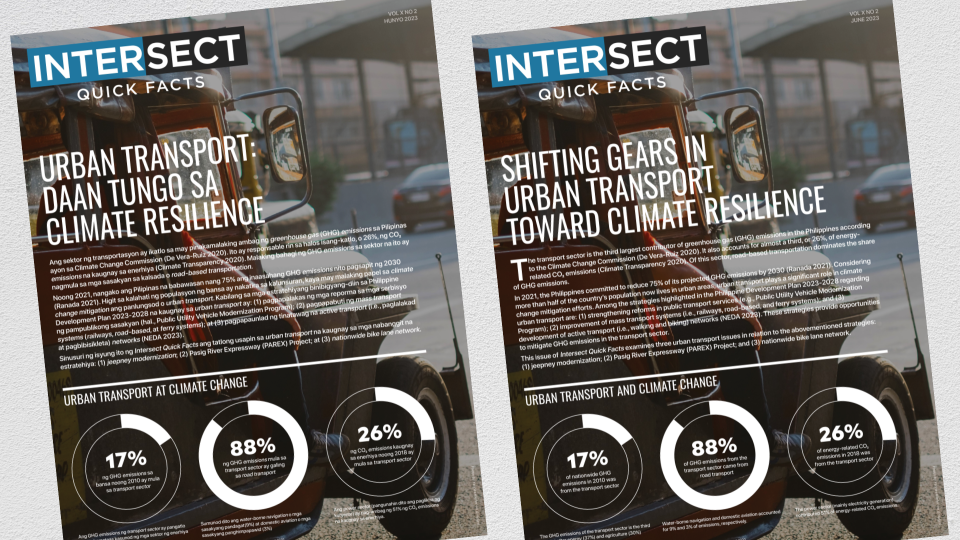The transport sector is the third largest contributor of greenhouse gas (GHG) emissions in the Philippines according to the Climate Change Commission (De Vera-Ruiz 2020). It also accounts for almost a third, or 26%, of energy-related CO₂ emissions (Climate Transparency 2020). Of this sector, road-based transportation dominates the share of GHG emissions.
In 2021, the Philippines committed to reduce 75% of its projected GHG emissions by 2030 (Ranada 2021). Considering more than half of the country’s population now lives in urban areas, urban transport plays a significant role in climate change mitigation efforts. Among the strategies highlighted in the Philippine Development Plan 2023-2028 regarding urban transport are: (1) strengthening reforms in public transport services (e.g., Public Utility Vehicle Modernization Program); (2) improvement of mass transport systems (i.e., railways, road-based, and ferry systems); and (3) development of active transport (i.e., walking and biking) networks (NEDA 2023). These strategies provide opportunities to mitigate GHG emissions in the transport sector.
This issue of Intersect Quick Facts examines three urban transport issues in relation to the abovementioned strategies: (1) jeepney modernization; (2) Pasig River Expressway (PAREX) Project; and (3) nationwide bike lane network.
Download here:
English (bit.ly/IQF-UrbanTranspo-Eng)
Filipino (bit.ly/IQF-UrbanTranspo-Fil)

